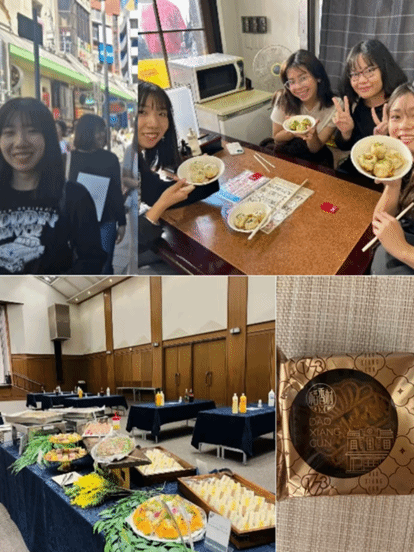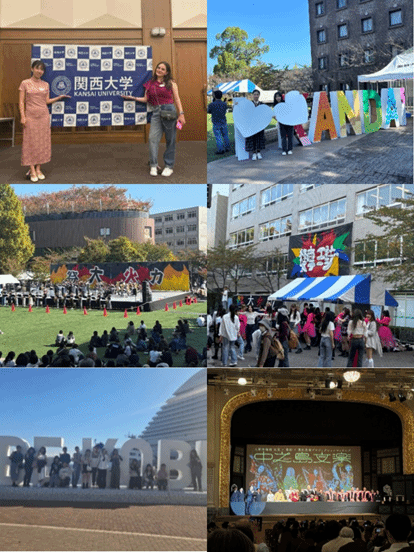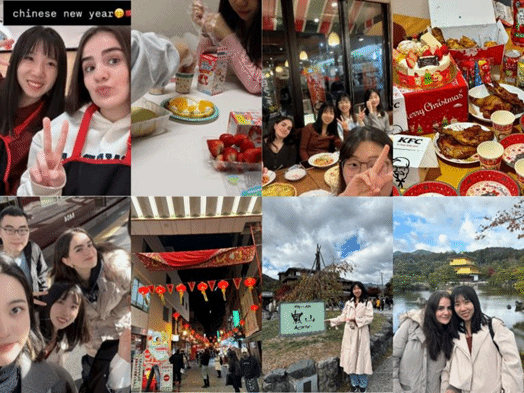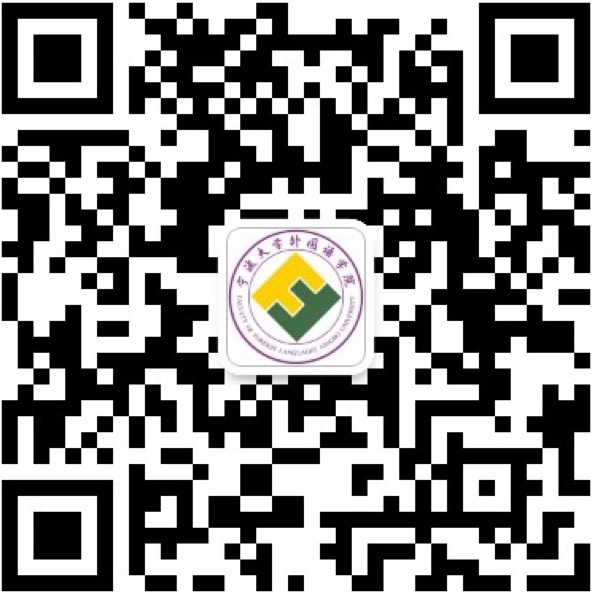Xue Yahui – Exchange at Kansai University, Japan
During my exchange program at Kansai University, I primarily took courses in economics, sociology, and finance, all of which were taught in English. The courses covered a wide range of topics and, compared to domestic courses, placed more emphasis on discussions, group cooperation, and case analysis. The classroom atmosphere was open, with frequent teacher-student interactions and diverse teaching methods such as seminars and group projects. I encountered some challenges during my studies, such as effectively communicating with group members when presenting in Japanese or English. However, through thorough preparation and extensive practice, I gradually overcame these difficulties.
Additionally, in my spare time, I actively introduced Chinese culture to friends from different countries, sharing stories about China. This not only enhanced my cross-cultural communication skills but also allowed me to help the world better understand my ancient and beautiful homeland.
September
During my exchange at Kansai University, I introduced the traditions of the Mid-Autumn Festival to friends from Japan and Mexico. Through showcasing mooncakes, explaining the tradition of moon-gazing, and sharing the festival’s origins, they developed a strong interest in this poetic cultural tradition. I also explained the cultural significance of family reunions and modern ways of celebrating the festival, deepening their understanding of Chinese culture.
October
In October, I visited Kobe’s Nankinmachi with classmates from Japan, Vietnam, Thailand, and South Korea to experience Chinese cuisine, such as soup dumplings and hand-pulled noodles. I took this opportunity to introduce the origins of these dishes and the cultural stories behind them. They were impressed by the diversity and sophistication of Chinese food and, through this experience, gained a more direct appreciation of Chinese culture.
November
In November, I participated in a Japanese university festival and discussed the differences between Chinese and Japanese university festivals with local students. I introduced extracurricular activities and campus festivals in Chinese universities and showcased photos of creative student events. They admired the energy and creativity of Chinese students, while I gained deeper insights into the similarities and differences between the campus cultures of the two countries.
December
In December, I visited Kyoto to view the autumn leaves and exchanged insights with Japanese classmates on the customs related to autumn foliage in both countries. I showed them photos of Beijing’s Fragrant Hills during the red-leaf season and introduced the cultural background and poetic significance of leaf-watching traditions. They were amazed by the stunning scenery of China’s red-leaf landscapes, and through our discussions, we deepened our mutual cultural understanding.
January
In January, after discussing Japanese Christmas and New Year traditions with foreign classmates, I introduced them to Chinese Spring Festival customs, including the New Year's Eve reunion dinner, the tradition of pasting Spring Festival couplets, red envelope culture, and New Year greetings. They were fascinated by the festive atmosphere and the strong emphasis on family in Chinese New Year celebrations. Through these cultural exchanges, I further promoted Chinese culture.
February
After spending half a year studying in Japan, I have gained a deeper understanding of the Kansai region, particularly the city of Osaka. More importantly, I have dedicated myself to sharing Chinese culture and stories with international friends. As the Chinese Lunar New Year approached, I actively promoted Chinese traditions by introducing Mexican friends to the hotpot culture at Haidilao in Osaka and taking them to Nankinmachi in Kobe to experience the lively New Year celebrations.
At Haidilao, we introduced them to the origins of hotpot and its regional variations across China, such as Sichuan spicy hotpot and Cantonese-style hotpot. We also shared the cultural significance of dining together, symbolizing reunion. Our friends were particularly intrigued by Haidilao’s unique services, Sichuan face-changing performances, and the DIY sauce bar. They eagerly tried using chopsticks to taste different ingredients, fully immersing themselves in Chinese dining culture.
Afterward, we visited Nankinmachi in Kobe, where we watched lion dances, Tai Chi demonstrations, and other Spring Festival celebrations. I explained the historical origins and symbolic meanings of lion dances and the philosophical concept of "softness overcoming hardness" in Tai Chi. My friends were deeply impressed by the charm of Chinese traditional culture and eagerly interacted with the lion dance performers, fully experiencing the festive atmosphere of the Spring Festival. This experience not only allowed international friends to deeply engage with authentic Chinese New Year traditions but also fostered greater understanding of Chinese customs across different cultural backgrounds.
Conclusion
This exchange experience has not only broadened my global perspective and deepened my knowledge but has also strengthened my confidence in my own culture. It has been a valuable academic and personal growth journey.
Xue Yahui, MA(Japanese Language and Literature) Candidate, Class of 2023








